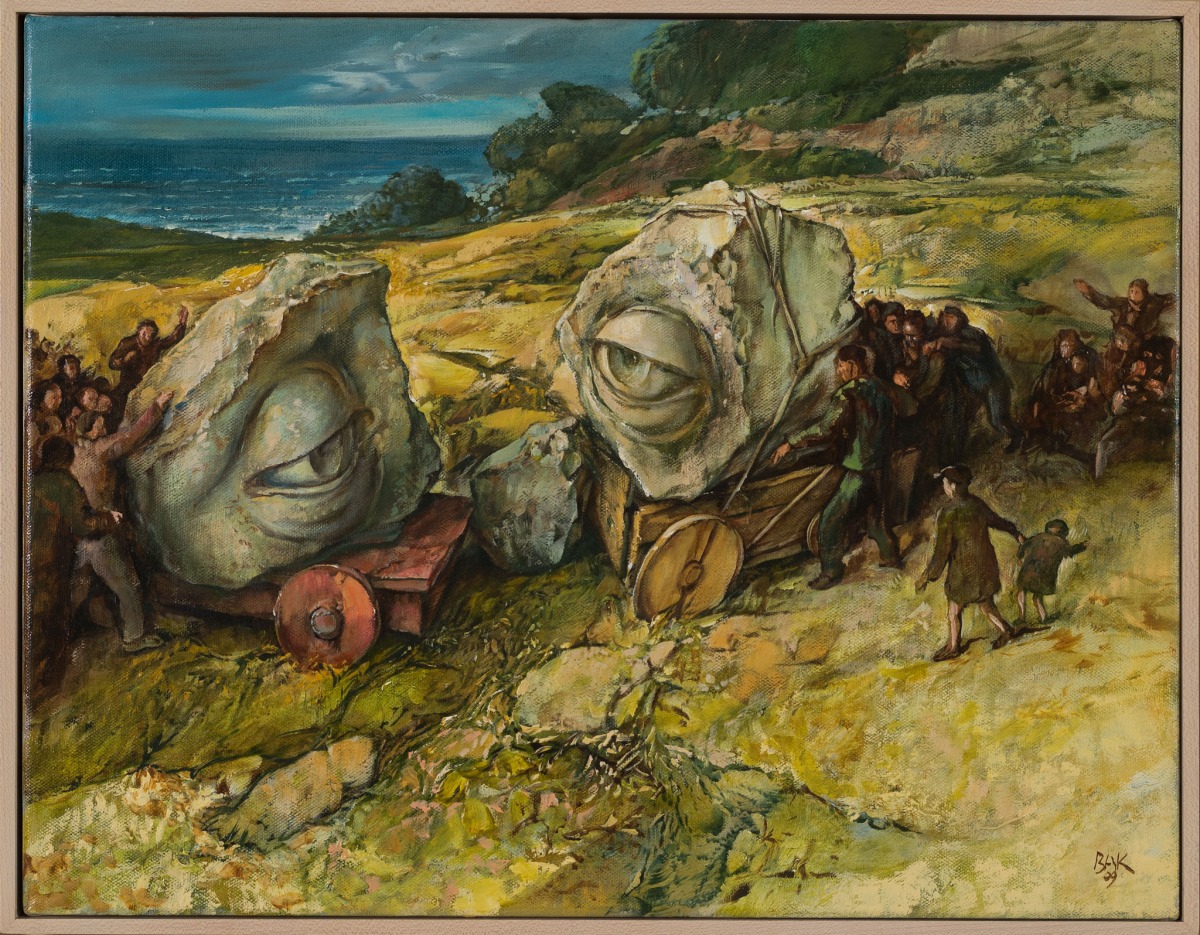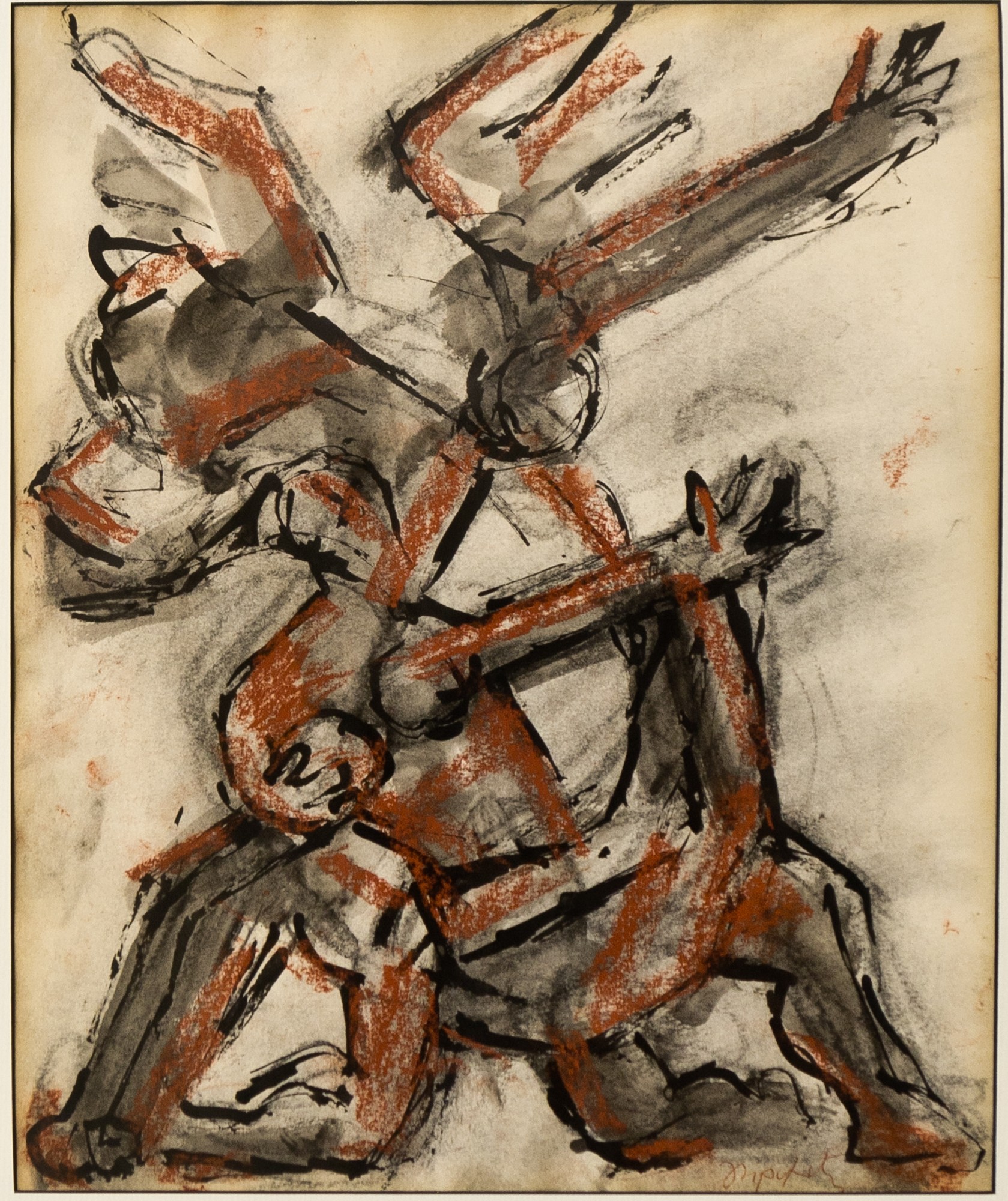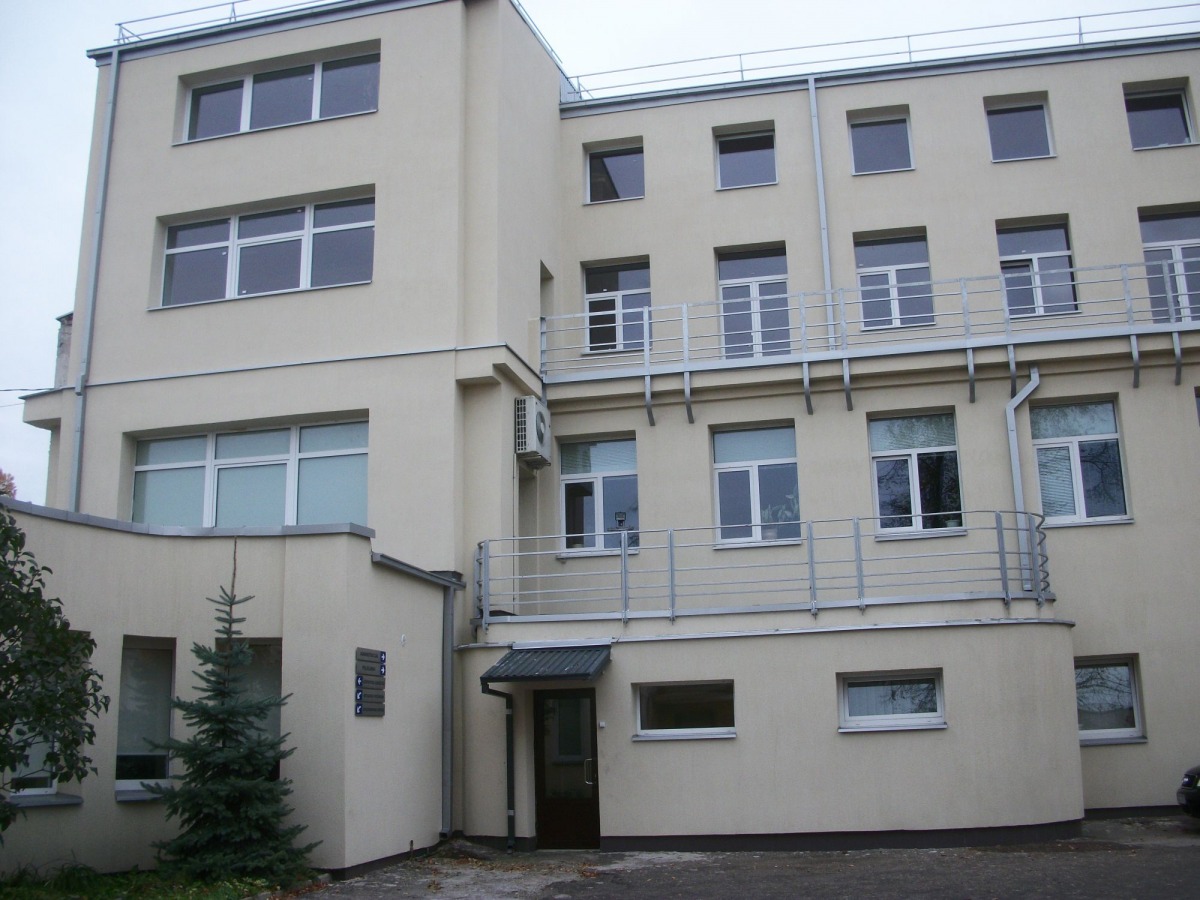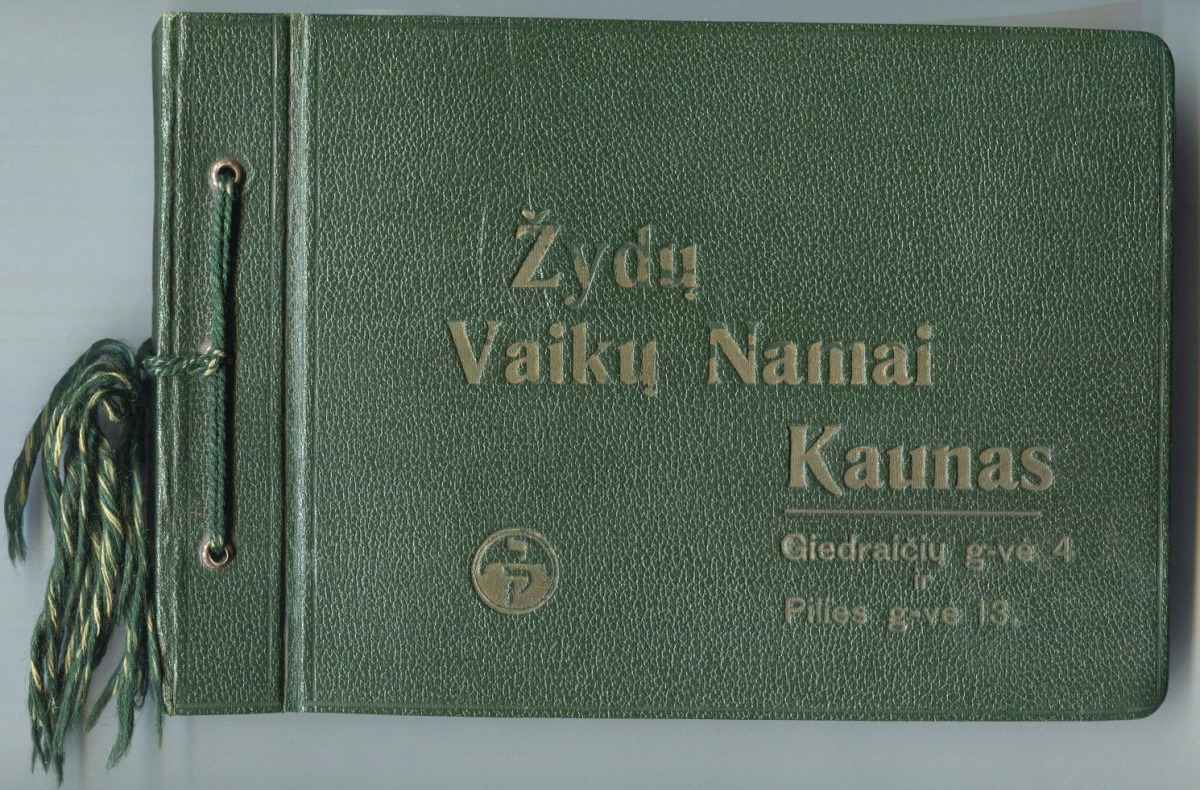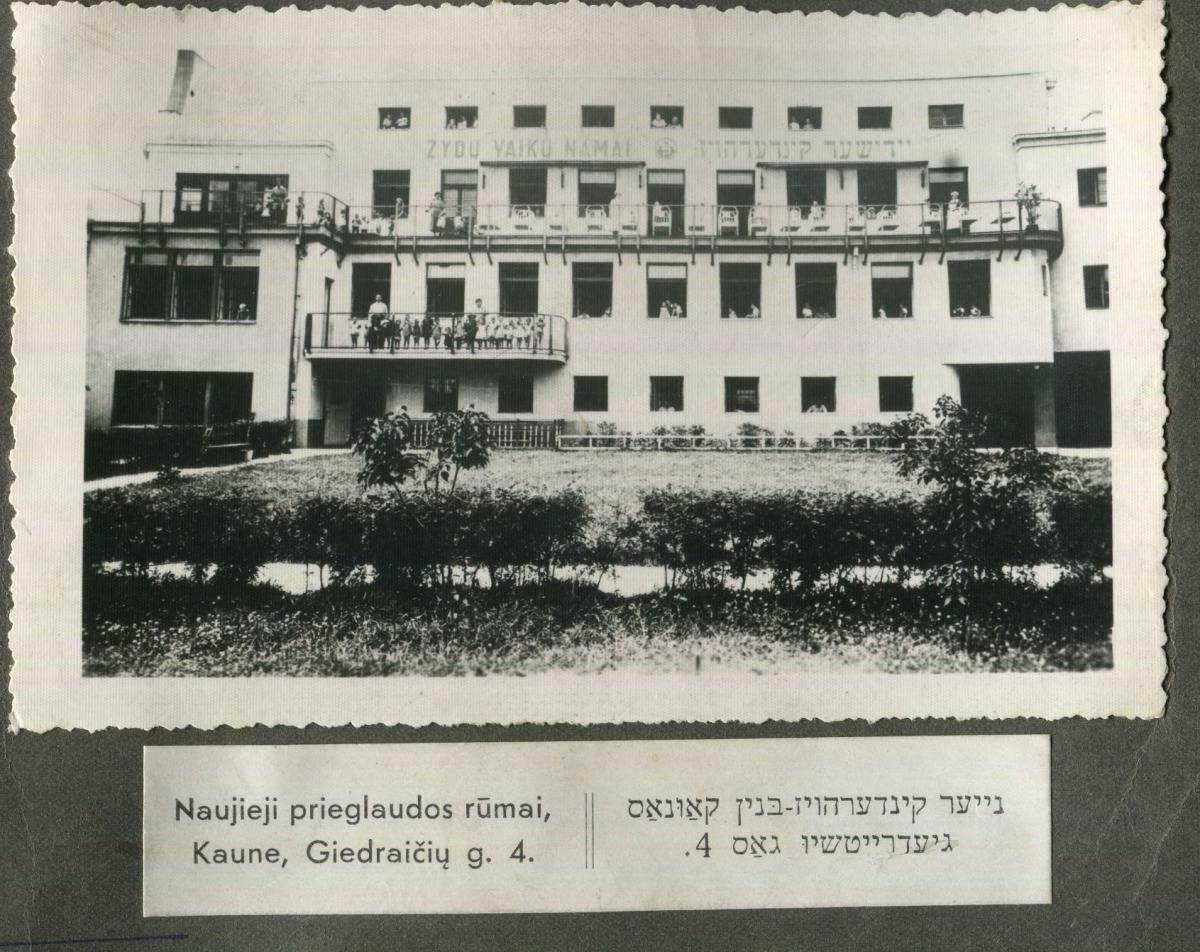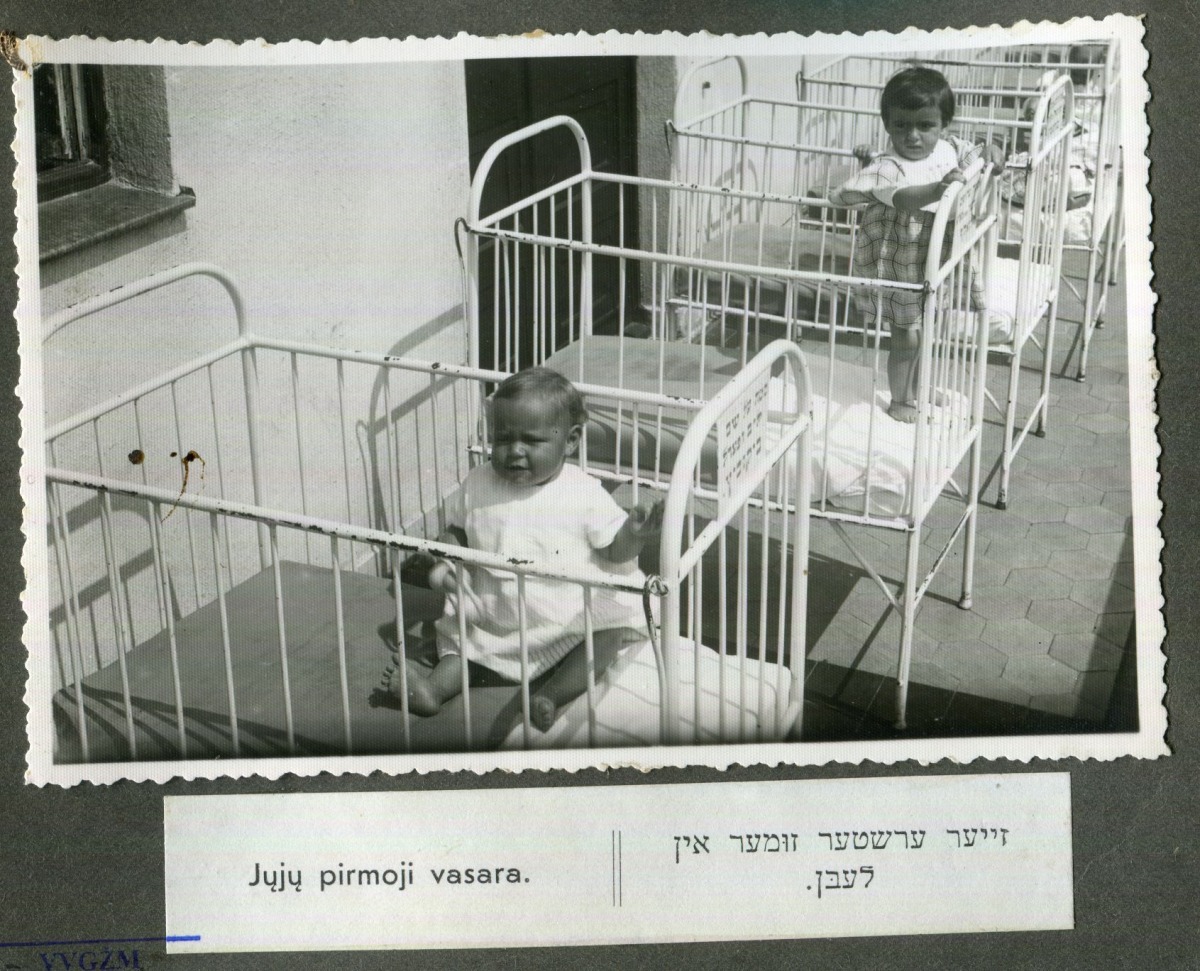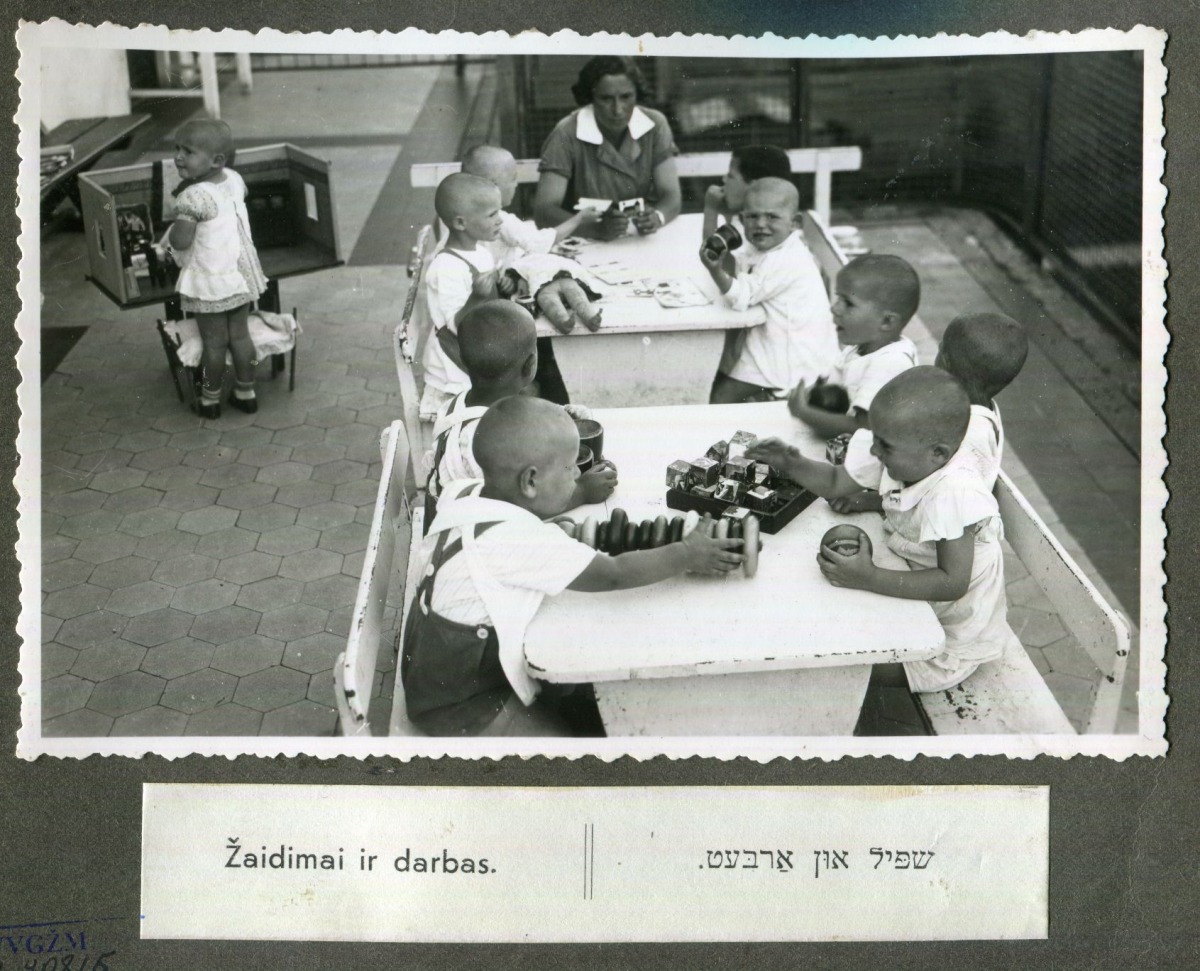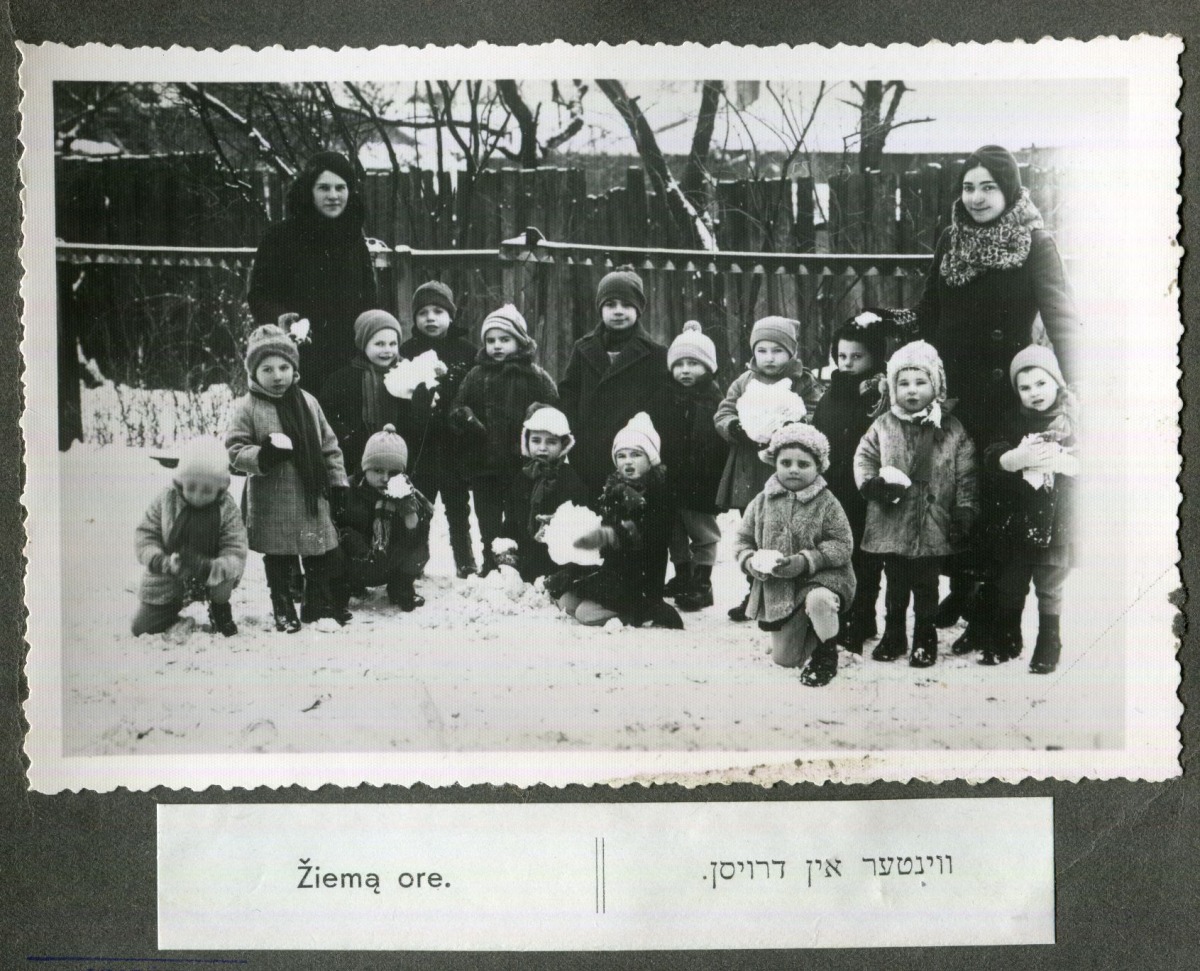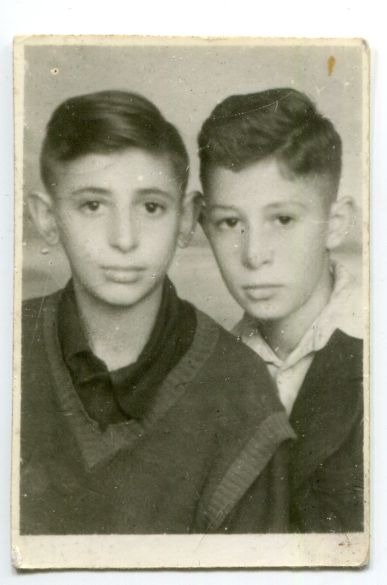EXHIBIT OF THE MONTH 2019 |
← |
January
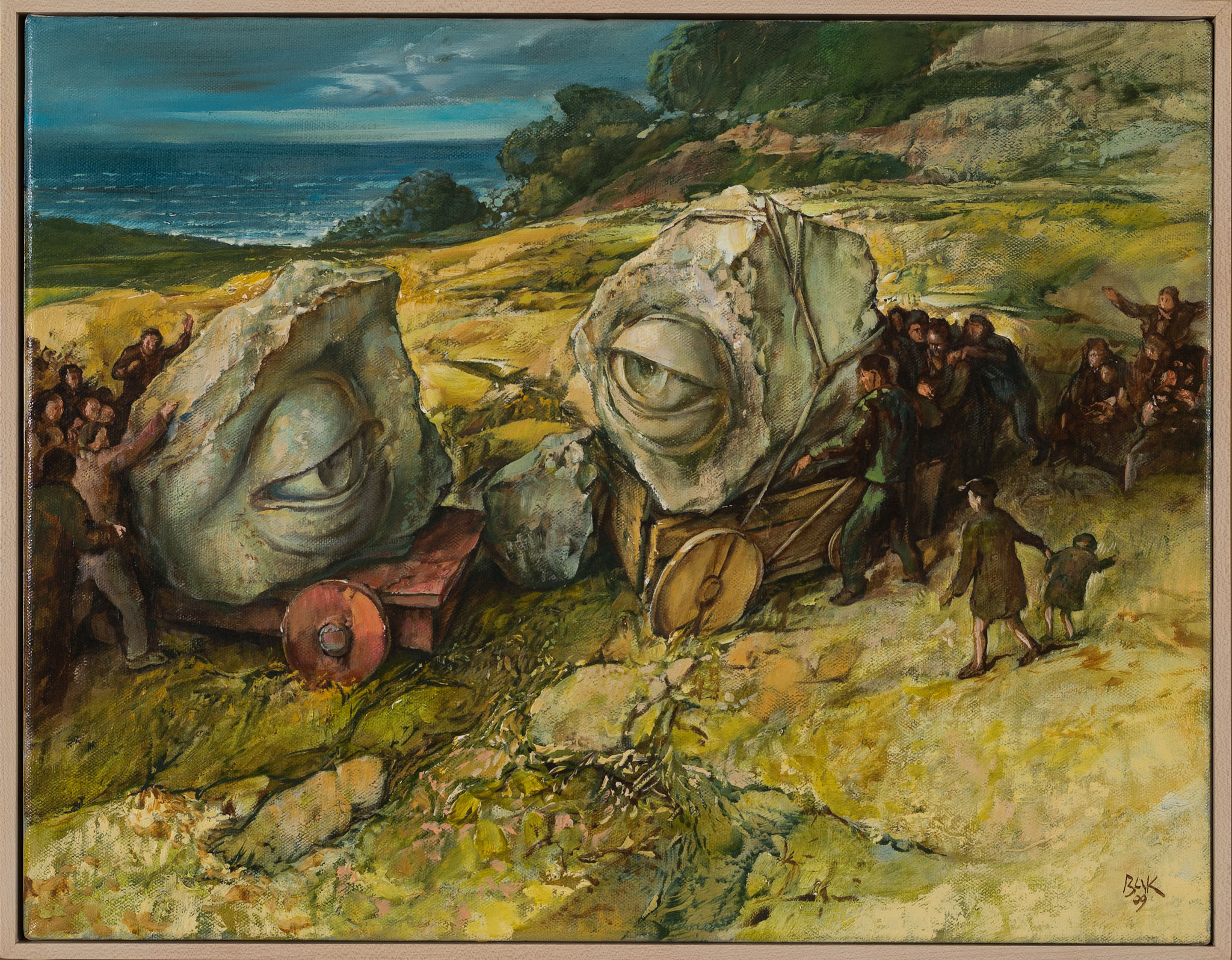 | 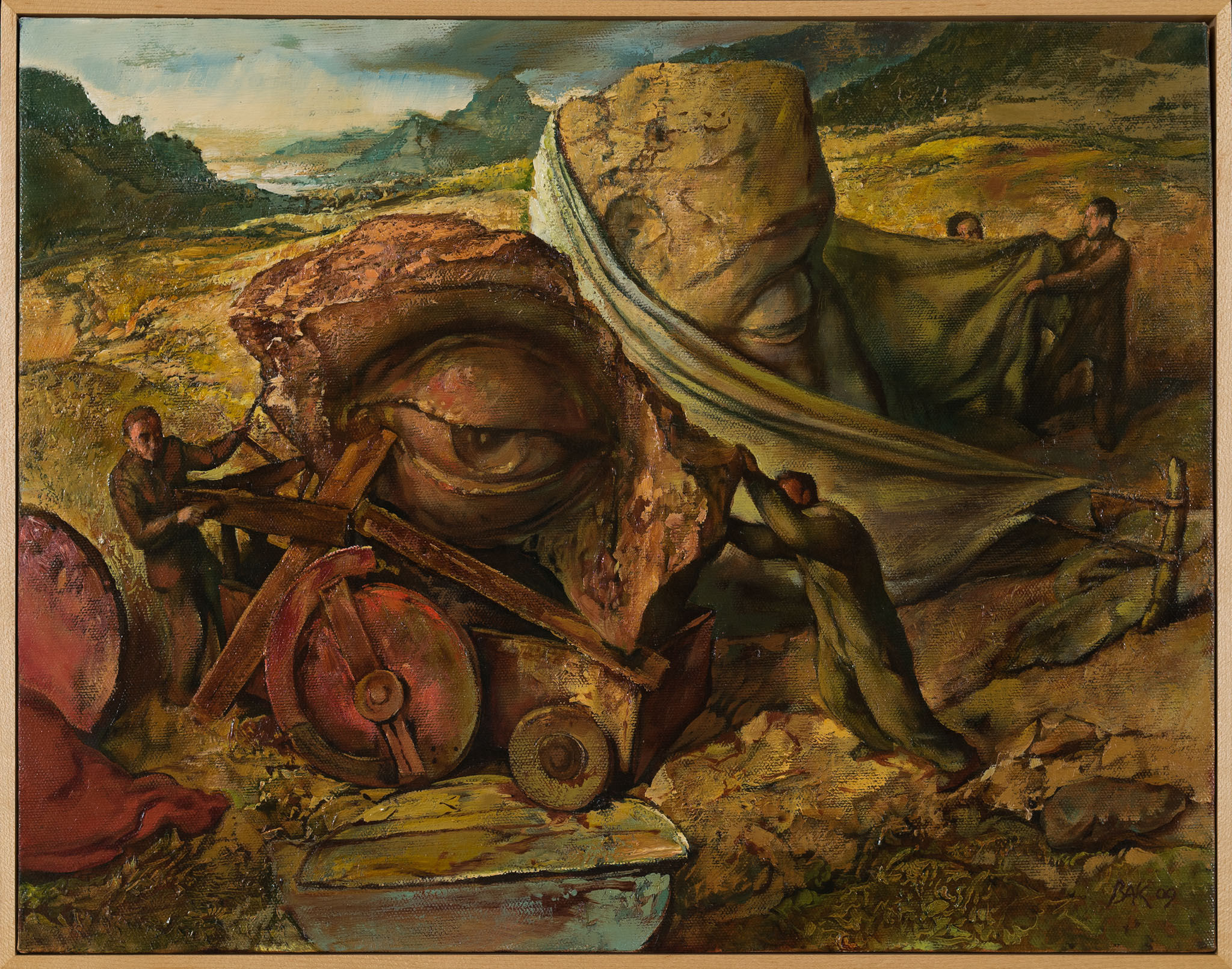 |
Samuel Bak. Eye for an Eye A, B (diptic)
EYE FOR AN EYE (A), 2009 (oil on canvas), EYE FOR AN EYE (B), 2009 (oil on canvas)
| There is not absolute truth in this life, only a compromise can help. |
| This series is dedicated to the theme of justice. Revenge causes a trail of deaths and wars. History witnesses the massacre of nations, if they follow the concept of justice “eye for eye”. The paintings depict two camps of people with their own “eye concept”. Two different camps share the burden of justice expressed in the thousand-year-old saying “an eye for an eye”. It is not clear which of the two groups has suffered or what crime was committed. Dead and static eyes, which once may have been part of one face have fallen prey to two opposite camps. There is no one truth, but there are different interpretations of the truth. Samuel Bak was born in 1933 in Vilnius. At the age of nine, Bak staged his first exhibition at the Vilna Ghetto. By the end of WWII, Samuel and his mother were the only members of his extensive family to survive. They were living in the displaced persons camp in Landsberg, Germany. Subsequently, the artist lived in Israel, Italy, France, and Switzerland before finally settling in the United States of America, where he continues his creative path. Prepared by Ieva Šadzevičienė, head of VGSJM Tolerance Center and Samuel Bak Museum |
Februrary
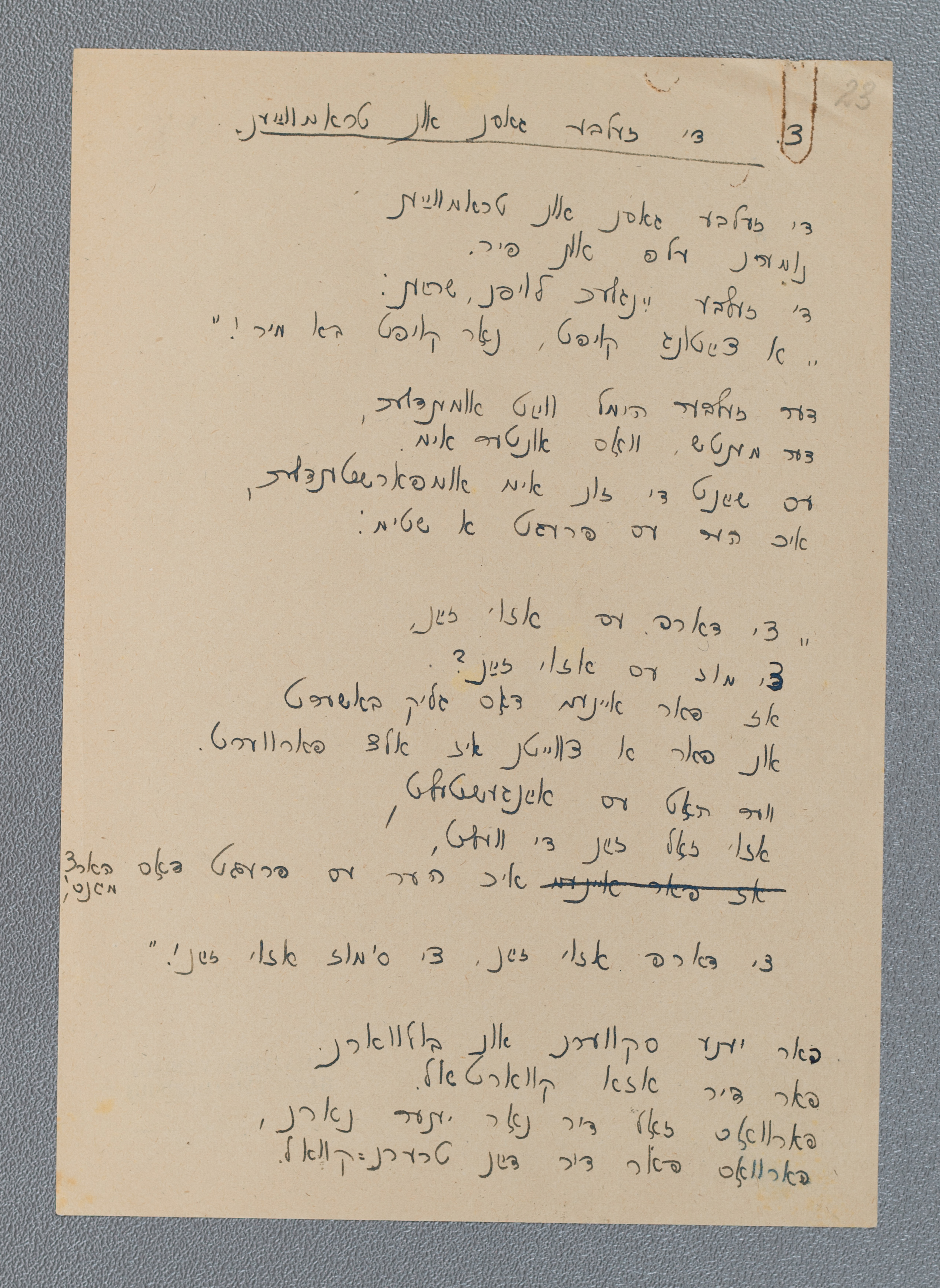
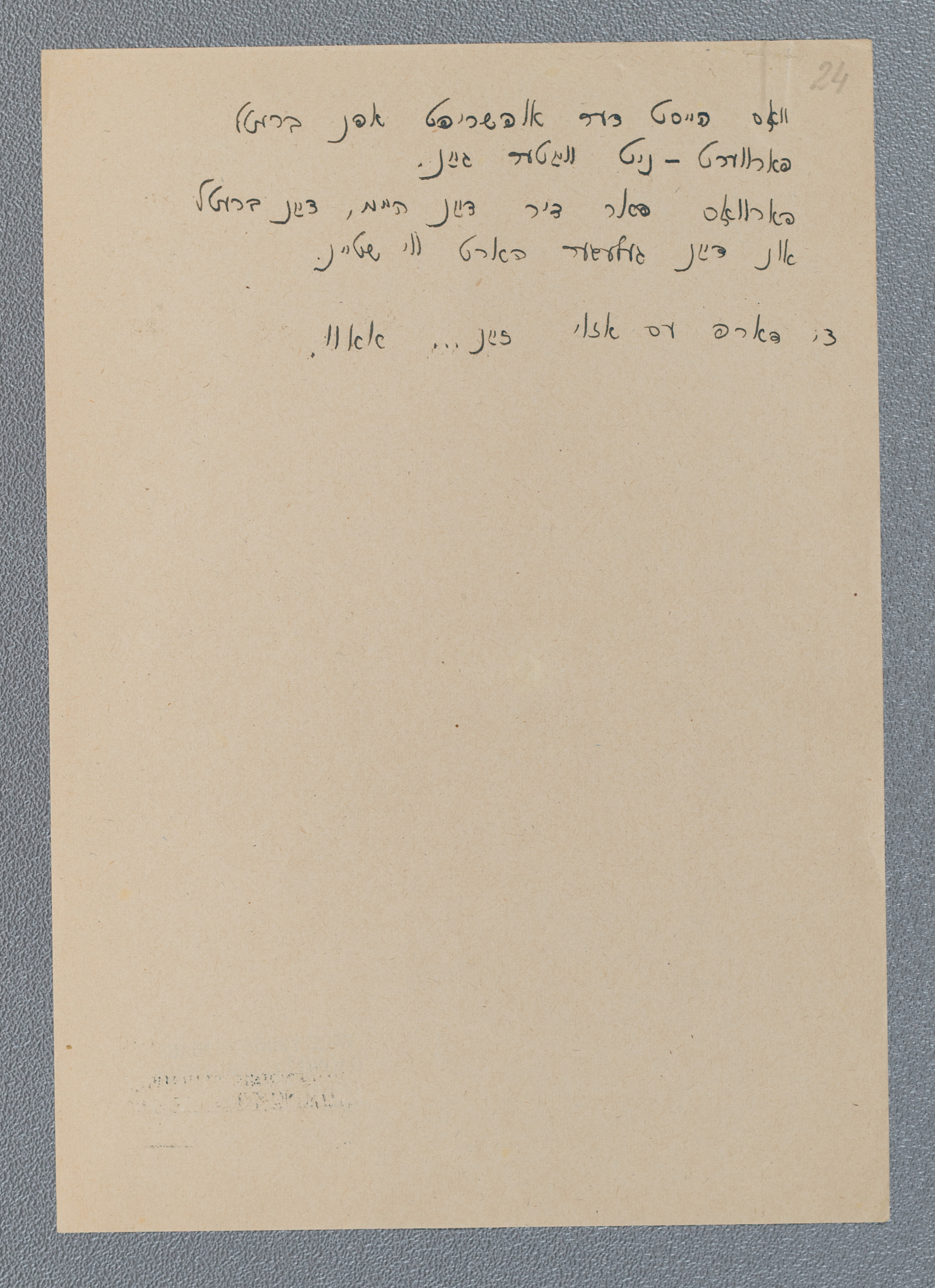
The song was written in the Vilna Ghetto. Lyrics and music by Kasriel Broydo.
Kasriel Broydo ‘The same old streets, the same old trams’From the compilation of songs from the Vilna Ghetto by Shmerel Katcherginsky |
| There was a huge poster at the gate leading to the Vilna Ghetto which read: “Attention! Smallpox danger! Jews live here. Entrance for Arias is strictly forbidden!” This comment is taken from the compilation Songs and Poems from the Ghetto by Shmerel Katcherginsky published in France in 1947. Kasriel Broydo was born in 1907 in Vilnius, where he graduated from a Hebrew gymnasium and became a professional actor. From 1935, Broydo was an actor at the puppet theatre Maidim (Pranksters). He wrote lyrics for songs and couplets. While in the Vilna Ghetto, he continued to act and write songs, reviews and music. Broydo wrote reviews for such plays as Korene jorn un vei cu di teg (Great rye harvest and an end to the good old days), Moiše, halt zich (Hold on, Moishe) and Men ken gorništ visn (You never know). In 1943, Broydo was deported to Narva and Kivioli concentration camps in Estonia. In 1944, he was taken by sea to Stutthof and from there to Konigsberg for hard labour. After finishing work each day, Broydo together with fellow-actors, brothers Fima and Marek Shapiro, kept the spirit of inmates alive by singing their songs and reciting poems. In 1945, when the “march of the dead” began, the inmates, including Broydo, surrounded by Germans and Ukrainians were taken to the Baltic Sea where in the night of 29 January they were forced into the water and shot to death. The same old streets, the same old trams – Numbers 11 and 4, The same young boys shouting around: “Buy a newspaper, buy it from me, sir”. The same endless sky, And people beneath it, Bright, clear sunlight, And a voice within me: Refrain: Can it be this way? Must it be this way? One man enjoys happiness, While another is banned from everything. Who was the one who said The world must be this way? My heart keeps asking: Can it be this way? Must it be this way? For them all the boulevards and squares, And just one single block for me. Why should someone deceive me? Why must I shed so many tears? Why the inscription on the wall: “You shall not walk past here?” Why do they take my home, my bed? And I lie on a rock hard berth in tears. Prepared by Ilona Murauskaitė, conservationist and researcher of written holdings at VGSJM Translated by Diana Guogienė Photo by Paulius Račiūnas © From the holdings of VGSJM |
March
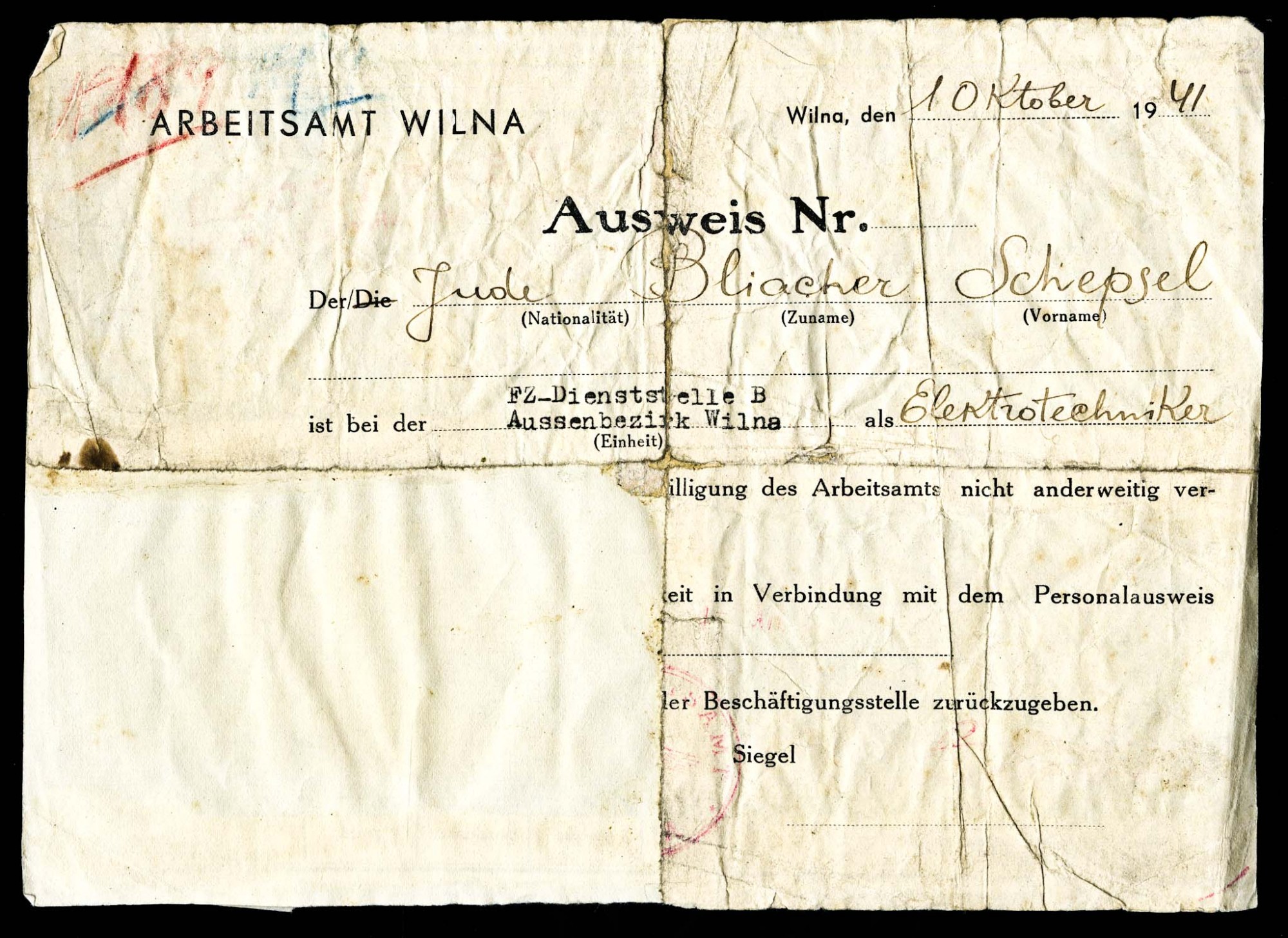
| Identity document issued to Mr. Shabtai-Shepsel Blecher on Oct 1st, 1941, print edition VGSJM 1302. |
| Born in Vilnius in 1904, Shepsel Blecher grew up in a working-class household of the Hirsh and Dina families together with his brother and sisters. Both Shepsel and his siblings received a traditional Jewish upbringing: S. Blecher studied in Cheder, a religious primary school, later he went on to study in the Hebrew high school. Whilst studying in high school, the young man was the most enthusiasticin the theatre group, showing his passion and drive towards the art he played many main roles. In the year 1919 S. Blecher travelled to a summer camp near Warsaw with a children’s group from Vilnius, where he fell in love with the Yiddish language through songs and theatre. During that summer camp the young theatre lover initiated drama classes. Together with his teachers’ guidance and help, they both organised for new children’s plays to take place every two weeks. Vilnius Art Association established an artisan theatre studio in 1921, where S. Blecher became one of the first students. Until this point S. Blecher had studied in college, he decided to drop his studies and commit to a life of theatre production: working as an actor, prompter and translator. Having finished theatre studies in 1923 S. Blecher began to work in Folks teater –National Theatre, occasionally working in the operetta, until he went to work in the New Jewish Theatre of Riga in 1926. After a few years upon returning to Vilnius, he began working in the cities best Jewish Theatre troupe, together with the biggest Yiddish theatre stars: Julius Adler, Esther Rokh and Ida Kaminska’s, Sigmund and Jonas Turkov et al. S. Blecher was one of the main initiators who helped to create a theatre in the Ghetto of Vilnius. Towards the end of 1941, several actors and the poet Avram Sutzkever assembled in S. Blecher bedroom, located in the Ghetto. According to the Vilnius Ghetto Prisoners documents of 1942, S. Blecher and his wife Gitel lived at 7/16 Strasuno Street. After many long discussions, the community decided upon establishing a theatre. Despite notions against this idea, “a theatre does not belong in a cemetery”, the theatre soon became one of the biggest places in the spiritual resistance movement, where Jews were able to spark joy and build faith. Whereby Jews of the Ghetto were able to remember that despite terrible circumstances they were still humans. In the Ghetto S. Blecher actively contributed to the community: he helped youth clubs, and assisted as a member for the board of community of writers, artists and painters, later becoming the secretary of the community. Also, S. Blecher had added to the deep history of the Ghetto, through his memorial work towards murdered and diseased artists. He had written about the life histories of twenty murdered and one diseased actors. In 1943 his accounts about life in the ghetto were found along a street, and preserved for the future. Later in 1962, these documents were released for public domain in the original Yiddish language. Those who published S. Blecher 21 biography records, had contributed another biography, this was his own life-history. For this reason, the book was titled ‘Twenty-One and One’ (‘Ein Un Cvancik Un Einer’). 1943 September 23rd post liquidation of the Vilnius Ghetto S. Blecher was transported to Klooga concentration camp (Estonia), where he was murdered in 1944 September 19th. Prepared by Saulė Valiūnaitė, the Head of Exposition of the Museum of Culture and Identity of Lithuanian Jews. Translated by Samanta Gudžiūnaitė. From VGSJM holdings. |
May
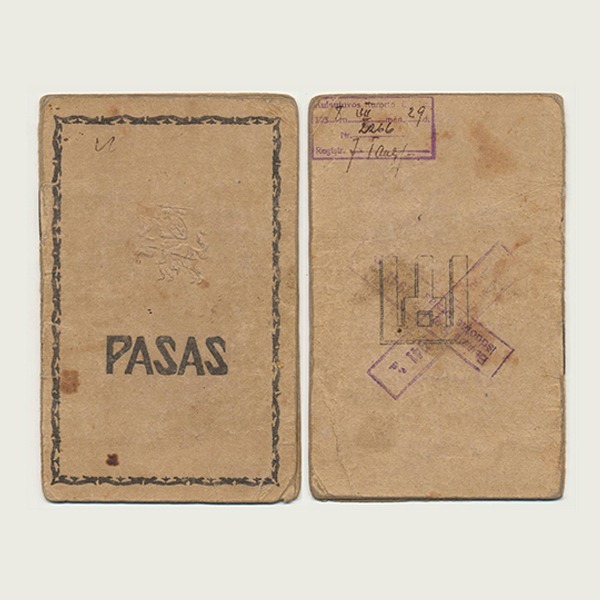
| The counterfeit passport Pranas Vocelka created for his wife Feiga in the name of Cecilija Jansonsaitė-Morkunienė. |
| Pranas Vocelka a Czech from Kaunas, risked his life to lead his family into safety out of the Kaunas ghetto among them where his wife Feiga and three children – Marija, Zofija and Juozas as well as a strangers’ child – Julijana Zarchi, whom Vocelka brought back to her grandparents. Pranas’ family lived in an apartment, which had no windows, nor did it seem to have any visual entrance. Pranas Vocelka kept his relations with the ghetto prisoners and rescuers of Jews, as he frequently visited the home of Helen Holzman. Vocelka was known as a master for creating and counterfeiting documents for Jews who were in hiding. This is how he managed to help many people to survive, not only his relatives, but also Rozalija Osipavičienė (Chaitinaitė), her daughters Zofija (now living in Kazakhstan), a former colleague (Šimon Joselevičius) children Pesach and Chana as well as other Jews living in the Kaunas ghetto. Prepared by Jovita Stundžiaitė, Department for Commemoration of Rescuers of Jews; translated by Samanta Gudziūnaitė. © Image from the VGSJM Department for Commemoration of Rescuers of Jews |
July
.jpg)
| Fragment of a wall tile from a miqve that was part of the architectural complex of the Great Synagogue of Vilna,inventory No. VŽM 9013/31 (Photo No. 1) |
| From the end of the 16th century to the 1940s the Great Synagogue of Vilna was famous for being an important spiritual and educational centre of the Jews of Lithuania which resulted in Vilnius being referred to as the Jerusalem of the North. The archaeological investigations on the site of the Great Synagogue of Vilna started in 2011 with the aim to identify the amount of remaining fragments of the architectural complex of the synagogue. The investigation continued from 2015 to 2018. This year a new season of archaeological research conducted by an international archaeological ream started on 1 July. The following architectural structures attributed to the Great Synagogue of Vilna have been included on the Register of Cultural Valuables: fragment of a stone wall with the entrance to the synagogue dating back to the second half of the 18th century – end of the 19th century; fragment of the southeastern stone wall with Aaron Kodesh dating back to the first half of the 17th century; fragment of the eastern corner of the stone synagogue; and architectural fragments of the synagogue building. In addition, the register includes remains or sites of the former buildings that were part of the architectural complex of the synagogue, i.e. remains of the bath building with ritual baths (miqve) dating back to the first half of the 19th century – first half of the 20th century. A miqve is a special bath located in the vicinity of a synagogue and used for purification rituals that include complete immersion into water. It was during the archaeological investigations of 2017 (lead by M. Daubaras) that the remains of two miqve were discovered. The following fragments of the two miqve were uncovered at the 6th cutting of the archaeological site: an external wall of public baths dating back to the first half of the 19th century, clay brick flooring of the interior and a miqve with steps leading into it as renovated in 1911. At the 7th cutting of the archaeological site archaeologists uncovered an external wall of public baths dating back to the first half of the 19th century, clay brick flooring of the interior and fragments of a miqve as renovated in 1911, including fragments of a water storage built at a later stage. The miqve was formed of pinkish-yellow sharp-edged bricks made of encaustic clay and grout. Several descent paths and a drainage ramp sruvived untouched. The inside walls of the miqve area were decorated with white square tiles. A mosaic made of yellow and small red tiles adorned the bottom of the uncovered miqve. The tiles were made in Grodno and, according to historic sources, could have been used to decorate the miqve back in 1911. Grodno brickyard and tile plant Stanisławów operated at the end of the 19th century – first half of the 20th century and was located on the territory of the former Stanislaw August Poniatowski’s summer residence named Stanislavov. _thumbH200.jpg) Miqve uncovered in 2017 during the archaeological investigations performed at the 6th cutting of the archaeological site (photo No. 2) Prepared by Asta Vasiliauskaitė Conservationist-researcher at the Inventory and Conservation of Holdings Department © Photo (1) courtesy of Neringa Dargytė © Photo (2) courtesy of Mantas Daubaras |
August
| Jacques Lipchitz. Hagar in the Desert. Sculpture design sketch. Paper, mixed media techniques; 41 x 34; VVGŽM |
| The sketch for the sculpture Hagar in the Desert by Jacques Lipchitz (1891 – 1973) was inspired by the Biblical story of Hagar, Sarah‘s servant from Egypt, with whom Abraham conceived his son Ishmael at the moment in life when he and his wife Sarah lost hope of giving birth to their mutual progeny. Following rows with the mistress of the house, pregnant Hagar went into the desert, but was convinced by an angel to return to the family. After a miracle happened and Sarah gave birth to Isaac, rows between Sarah and Hagar started again. Finally, Hagar took her son and left for the desert for the second time. It was there that an angel found them barely alive and promised Hagar that her son will also become the progenitor of a strong nation on Earth. In this sketch, Lipchitz portrayed the second departure of Hagar for the desert. The artist used the technique of merging several figures together into a single piece, which he liked doing since his early years as a Cubist artist. Here he merges the figures of Hagar, Ishmael and the angel into one. As a result, one figure becomes part of the other (e.g. the mother holds the head of her exhausted and prostrate son which at the same time appears to be part of her breast). The parallel stretched hands of the two figures seemingly symbolise two different actions: the stretched hand of Hagar is a symbol of pleading, whereas the stretched hand of the angel symbolises a promise and a direction. When working on his sculptures and their sketches, Lipchitz tended to return to the same plot time and again, often even dozens of times. This particular sketch was created in 1948 and the bronze sculpture was made only in 1969. Maternity is one of the key plots characteristic of the so called American period (1941-1973) in the creative life of Jacques Lipchitz. During the final years of the war and in the post-war period when the first horrific pictures from concentration camps reached American society, the artist created a number of dramatic compositions titled Mother and Child. Being a humanist and in search for symbols that would bring the disjointed post-war world together again, Lipchitz accepted the request of his acquaintance, a French abbot, and created a sculpture of Virgin for a church in the Haute-Savoie region of France. Later he created another sculpture bearing the same title for the Argyll abbacy in Scotland. On the pedestal of one of the sculptures the artist left an inscription with read as follows: ‘Jacob Lipchitz, a Jew faithful to the religion of his ancestors, made this Virgin for the good understanding of mankind upon earth, as long as the Spirit reigns.’ In 1948, several miraculous events happened in the life of the artist: being of mature age he fathered a daughter named Loyla and news about the rebirth of the State of Israel travelled the world. Lipchitz expressed his joy by creating Miracle, a piece of art full of Judaic symbols. However, soon military conflicts sparked in the Holly Land, which saddened the artist very much. Just like he did many times before, Lipchitz took to searching for answers in Biblical stories and it was then that the story of Hagar caught his attention. Later in his autobiographic book My Life in Sculpture the artist wrote that Hagar in the Desert symbolises hope ‘that we will finally find a way to live like brothers, just like it used to be for ages…’ Prepared by Aušra Rožankevičiūtė, museology specialist at History Research Department |
October
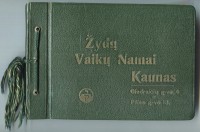 | 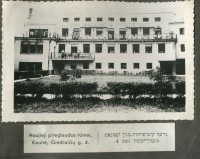 |
| VŽM 408. Photo album (19 photos) ‘Jewish Children’s Homes. Kaunas, Giedraičių St. 4 and Pilies St. 13’ |
| In 1932, a Jewish children’s home was built on Giedraičių St. 4 in Kaunas, Žaliakalnis residential district. The building was erected based on a construction design project by a German architect Hirschfeld and an engineer from Kaunas Baruch Kling. Sunlight, cleanliness and space were extremely important elements when designing the building. In front of the house there was a large yard designated for ‘sunbathing’. The final design included a garden, too. Chaimas Vilionskis (b. 1931 in Kalvarija), a former resident of a Jewish children’s home in Kaunas, remembers: ‘In the interwar period there were three Jewish children’s homes in Kaunas sponsored by the Jewish community. Among them there was a Jewish children’s home for pre-school children located on Giedraičių St. 4 (currently Giedraičių St. 8) in Žaliakalnis residential district. Yet another Jewish children’s home was meant for school-age boys. It was located on Ugniagesių St. 15 (currently J. Gruodžio St. 25 / Smalininikų St. 21). The third Jewish children’s home was meant for school-age girls and was located on Pilies St. 13 (currently Rotušės Square 4). I stayed at the Žaliakalnis children’s home until it was time for me to go to school. There we received an extremely good care. I remember Liuba Solomina, our educator and director. In 1938, I was moved to a children’s home on Ugniagesių St. 15...’ In summer, the residents of children’s homes would spend their time in Lampėdžiai summer camp. This was where they were staying in the summer of 1941, too. At the beginning of the summer, the children from the Jewish children’s home on Giedraičių St. 4 in Kaunas were moved to the summer camp in Lampėdžiai. Several days after the war broke out, a big tragedy happened: more than 80 babies and very young children together with their nurse Cipora were killed. After 1941 and in the aftermath of World War II, the building of the Jewish children’s home on Giedraičių St. 4 in Kaunas (currently Giedraičių St. 8) hosted a paediatric hospital of infectious diseases and a hospital of infectious diseases for adult patients. Today the reconstructed building hosts Kaunas County Addiction Centre. Jewish children’s homes operated in Lithuania till 1948. Later their residents were moved to live in mixed children’s homes. Chaimas Vilionskis continued to live in a children’s home till 1951. Later he enrolled at the Polytechnic Institute of Kaunas.
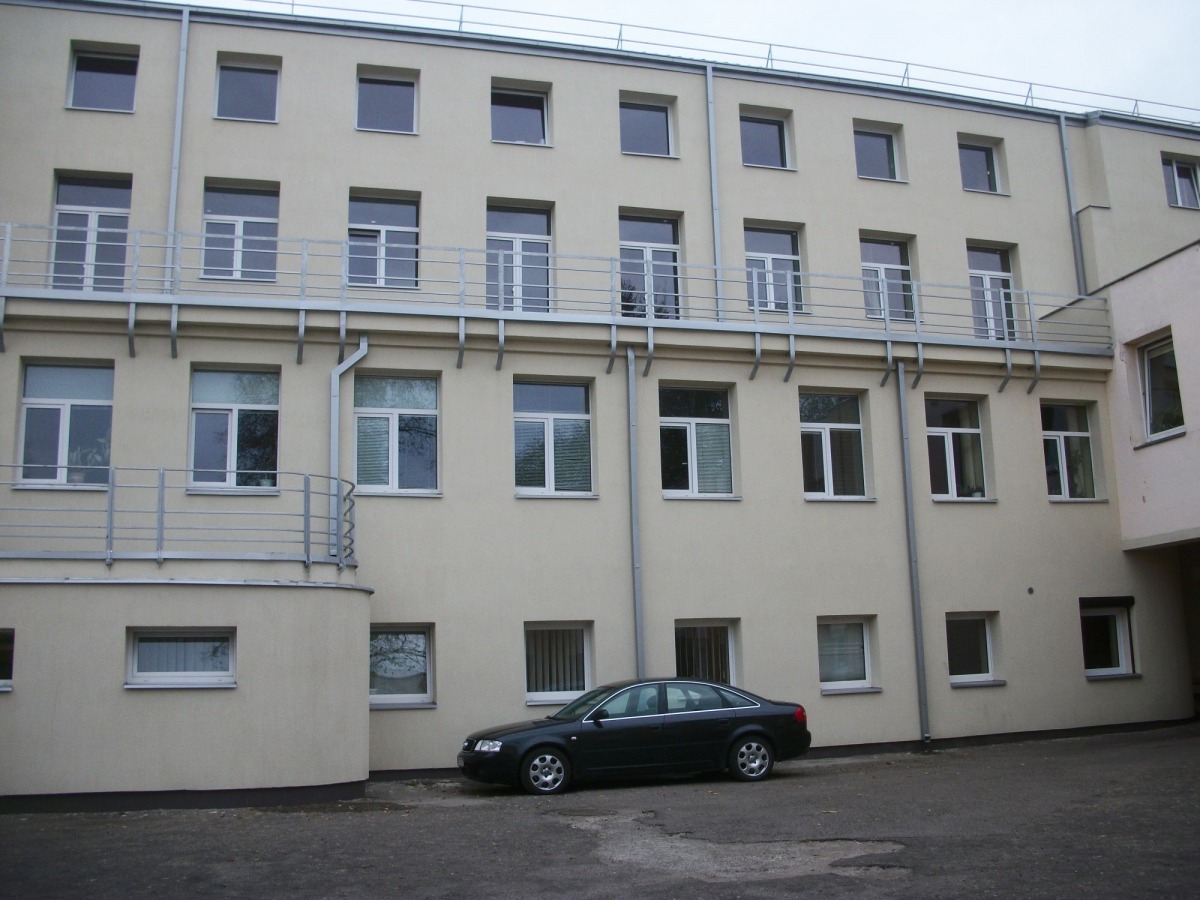 VŽM 8508-1b, VŽM 8508-1c Formerly pre-war Kaunas Jewish childrens home for preschoolers Giedraičių St. 4. (now Giedraičių St. 8, Kaunas County Center for Addictive Diseases). 2010 Photo by Judita Rozina
VŽM 408-1. Formerly Jewish Childrens Home in Kaunas, Giedraičių str. 4 (now Giedraičių str. 8). 1932
VŽM 408-3. Their first summer. "Sun Bath" on the spacious balcony
VŽM 408-12. Outside in the winter. In the backyard of the Childrens Home. 1935 On the right is the teacher Liuba Solomina Prepared by Olga Movšovič Conservationist-researcher at the Inventory and Conservation of Holdings Department © Images from the VGSJM collection Bibliography: 1. Personal file of Chaimas Vilionskis (VŽM 8508), a former resident of the children’s homes in Kaunas 2. Chaimas Vilionskis. Apie žydų vaikų namus [About Jewish Children’s Homes]. Brasta. 2018, No. 1 (9) 3. Рувим Блюм, Торонто. Тайна трагедии в Лампиджяй. «Еврейский камертон» (Израиль). 8 марта 2012. (Evreiskii Kamerton) 4. Kastytis Rudokas. Vaikų infekcinė ligoninė (buv. Žydų vaikų namai) Kaune (išlikęs) [Paediatric Hospital of Infectious Diseases (former Jewish children’s home) in Kaunas (surviving) [reviewed on 06/08/2019]. 5. Alvydas Laiškonis. Infekcinės ligos Kaune XVI–XXI a. [Infectious Diseases in Kaunas in the 16th–21st c.] Annex Infekcinės ligos to the magazine Internistas of 2016, No. 1 (10) [reviewed on 06/08/2019]. |
| ↑ | ← |
